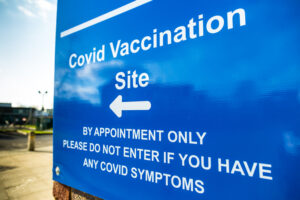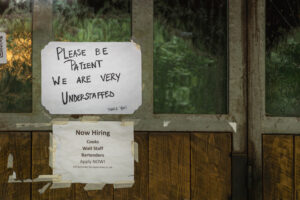‘Tis the Season…for More EVs.
By Rachel Yoka, CAPP, LEED AP BD+C
 The US Forest Service recently announced a new pilot program in Greenfield Village at The Henry Ford in Dearborn, Michigan, in which the Forest Service EVs delivered Christmas trees from the Huron-Manistee National Forest for families in Detroit. Much of our industry’s focus has been on how to properly deploy charging infrastructure to serve patrons. Less is known about how to properly utilize fleet EVs.
The US Forest Service recently announced a new pilot program in Greenfield Village at The Henry Ford in Dearborn, Michigan, in which the Forest Service EVs delivered Christmas trees from the Huron-Manistee National Forest for families in Detroit. Much of our industry’s focus has been on how to properly deploy charging infrastructure to serve patrons. Less is known about how to properly utilize fleet EVs.
The 12-month pilot will determine barriers, impacts, and outcomes through weekly surveys to collect feedback on day-to-day field operations. The surveys will tally how vehicles were used, weather conditions, road types, maintenance issues, and staff perception. Our industry’s frontline personnel are utilizing electric fleet vehicles more widely, although in more dense and urban environments, but the strategies employed by the Forest Service could prove useful for IPMI members and the industry.
There’s a whole lot more involved in EV charging programs than plugging vehicles in and ensuring that vehicles are maintained properly. How are you monitoring and collecting information on EV vehicles and fleets utilized by your organizations. Proactively gathering data on how EVs fare in day-to-day operations creates yet another opportunity for our industry to share critical information on larger-scale deployments and how to best prepare for an electrified future.
Rachel Yoka, CAPP, LEED AP BD+C, is IPMI’s Chief Strategy Officer. She can be reached at yoka@parking-mobility.org.



 By Sylvia Martinez-Mullally, MPA
By Sylvia Martinez-Mullally, MPA Staffing–recruiting, hiring, and retaining employees–has never been more of a challenge. What’s an organization to do?
Staffing–recruiting, hiring, and retaining employees–has never been more of a challenge. What’s an organization to do? By Rachel Yoka, CAPP, LEED AP BD+C
By Rachel Yoka, CAPP, LEED AP BD+C By Chris Polk, CAPP
By Chris Polk, CAPP By Kathleen Federici, MEd
By Kathleen Federici, MEd
 By Brett Wood, CAPP, PE
By Brett Wood, CAPP, PE By Vanessa Solesbee, CAPP
By Vanessa Solesbee, CAPP